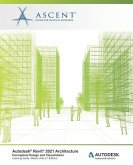Autodesk(R) Revit(R) is a Building Information Modeling (BIM) tool, which can be used by more than one person working on a new project. This is an important feature in collaboration within a project, between projects, and with other users, firms, and disciplines. The objective of the Autodesk(R) Revit(R) 2024: Collaboration Tools guide is to enable users who have a basic knowledge of Autodesk Revit to increase their productivity while working with other people on a team, either in the same firm or other firms as well as with other disciplines. It also covers linking Autodesk Revit files and linking or importing other CAD files. Practices are available for each of the primary disciplines covered by Autodesk Revit: architecture, MEP, and structure. Topics Covered * Set up project phasing * Use groups * Create and display a variety of design options * Link Autodesk Revit files * Use multi-discipline coordination, including Copy/Monitor and Coordination Review * Import and export CAD and raster files, including exporting Revit models for energy analysis * Understand, use, and set up worksharing in a server-based environment Prerequisites * Access to the 2024.1 version of the software, to ensure compatibility with this guide. Future software updates that are released by Autodesk may include changes that are not reflected in this guide. The practices and files included with this guide might not be compatible with prior versions (e.g., 2023). * Users should be comfortable with the fundamentals of Autodesk Revit as taught in Autodesk Revit: Fundamentals for Architecture, Autodesk Revit: Fundamentals for MEP, or Autodesk Revit: Fundamentals for Structure. Knowledge of basic techniques is assumed, such as creating typical elements, copying and moving objects, creating and working with views, etc.








